
Exposé Online
What's old
Exposé print issues (1993-2011)
- 1 (October 1993)
- 2 (February 1994)
- 3 (May 1994)
- 4 (August 1994)
- 5 (October 1994)
- 6 (March 1995)
- 7 (July 1995)
- 8 (November 1995)
- 9 (March 1996)
- 10 (August 1996)
- 11 (February 1997)
- 12 (May 1997)
- 13 (October 1997)
- 14 (February 1998)
- 15 (July 1998)
- 16 (January 1999)
- 17 (April 1999)
- 18 (November 1999)
- 19 (May 2000)
- 20 (October 2000)
- 21 (March 2001)
- 22 (July 2001)
- 23 (December 2001)
- 24 (April 2002)
- 25 (September 2002)
- 26 (February 2003)
- 27 (August 2003)
- 28 (December 2003)
- 29 (April 2004)
- 30 (September 2004)
- 31 (March 2005)
- 32 (September 2005)
- 33 (May 2006)
- 34 (March 2007)
- 35 (January 2008)
- 36 (October 2008)
- 37 (July 2009)
- 38 (July 2010)
- 39 (Summer 2011)
Features
Beyond the Hall of Mirrors —
A History of The Enid to 1996
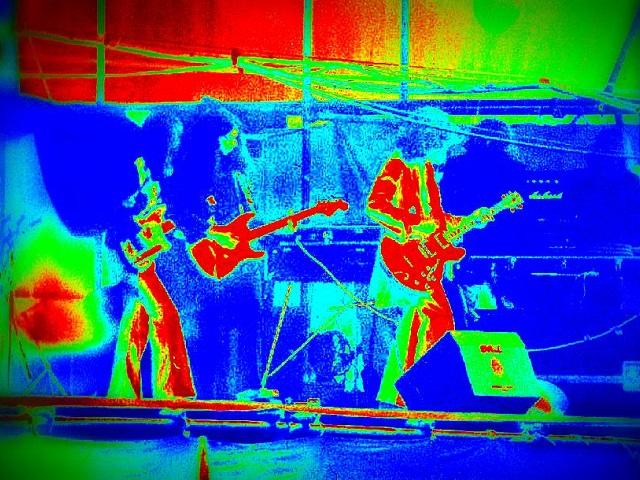
To put into perspective The Enid's background we need to be acquainted with the soil in which the seeds of their history were sown. This place was called Finchden Manor. Finchden was a very unorthodox, informally structured boys boarding school in England. And it was here, in 1973, where the nucleus of Robert John Godfrey, Francis Lickerish, and Steve Stewart, met and later formed the group. Let's pick up the story a few years earlier in time.
by Mike Ezzo, Published 1996-08-01
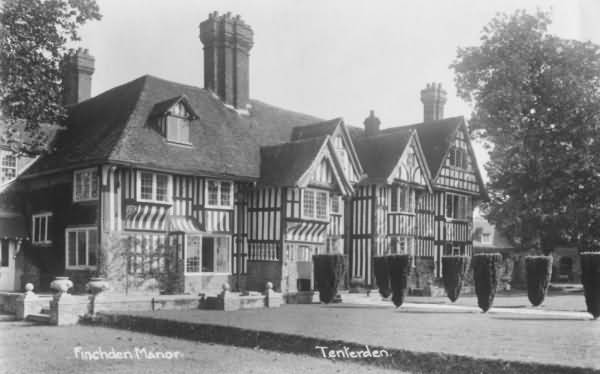 After leaving Finchden, and an aborted attempt at a career as a classical pianist, Godfrey hooked up with Barclay James Harvest. From 1969 until 1971 he worked with them, developing some of their early classic songs, and directing their accompanying orchestra. Leaving this situation he came across a band called Siddartha. And while playing at one of their concerts he was discovered by Charisma Records mogul Tony Stratton-Smith, who soon signed the very talented keyboardist onto the label's roster. Late in 1972 Robert went to work and produced Fall of Hyperion for Charisma. If ever there were such a thing as Pre-Raphaelite music, this is probably what it would resemble. Certainly it addresses similar themes. Lyrics are based upon the poems of Keats, and the whole affair has an air of the mythological. The music is rapturous and majestic, featuring mellotron and piano extensively, setting the stage for much of what would come later. Dante Gabriel Rossetti and Edward Burne-Jones would have loved this!
After leaving Finchden, and an aborted attempt at a career as a classical pianist, Godfrey hooked up with Barclay James Harvest. From 1969 until 1971 he worked with them, developing some of their early classic songs, and directing their accompanying orchestra. Leaving this situation he came across a band called Siddartha. And while playing at one of their concerts he was discovered by Charisma Records mogul Tony Stratton-Smith, who soon signed the very talented keyboardist onto the label's roster. Late in 1972 Robert went to work and produced Fall of Hyperion for Charisma. If ever there were such a thing as Pre-Raphaelite music, this is probably what it would resemble. Certainly it addresses similar themes. Lyrics are based upon the poems of Keats, and the whole affair has an air of the mythological. The music is rapturous and majestic, featuring mellotron and piano extensively, setting the stage for much of what would come later. Dante Gabriel Rossetti and Edward Burne-Jones would have loved this!
 Fall of Hyperion was dedicated to George Lyward, founder of Finchden Manor, who had passed away a year prior. His death inspired in Godfrey concern for Finchden's fate. Destiny brought him back there, and what he found upon visiting was that Finchden was in the throes of closing up for good. By this time Steve and Francis were both students of the school. They were busy preparing the musical score for Finchden's final theatrical production, "The Quest For the Holy Grail." Robert, eager to pay homage to his alma mater, put his expertise to work in aiding the two young guitarists on the project. He later reminisced on the whole venture as the most important religious and emotional experience of his life. Certainly it was important in that it signified The Enid was born. June of 1974.
Fall of Hyperion was dedicated to George Lyward, founder of Finchden Manor, who had passed away a year prior. His death inspired in Godfrey concern for Finchden's fate. Destiny brought him back there, and what he found upon visiting was that Finchden was in the throes of closing up for good. By this time Steve and Francis were both students of the school. They were busy preparing the musical score for Finchden's final theatrical production, "The Quest For the Holy Grail." Robert, eager to pay homage to his alma mater, put his expertise to work in aiding the two young guitarists on the project. He later reminisced on the whole venture as the most important religious and emotional experience of his life. Certainly it was important in that it signified The Enid was born. June of 1974.
Adding a fourth member, the band moved into a house together and eagerly commenced arranging original musical material (some of which was based on the music for "The Grail"): a concept album relating to tarot cards and psychology, to be called "Voyage of the Acolyte." Tony Stratton-Smith was approached with the idea, but Charisma had to balk at signing The Enid for what must have been financial reasons. Subsequently he recommended the same concept to Steve Hackett, who based his first solo work on it. (Another connection to Hackett is his one-time keyboardist, Nick Magnus, who was also an early Enid member for a short time).
 Retitled more poetically as In the Region of the Summer Stars, The Enid's debut was recorded in 1975, but not released until a year later. Joining them for this project were drummer, Dave Story; Glen Tollet, as second keyboardist; and bassist Neil Kavanaugh; Dave Hancock was guest trumpeter. By this time they were signed to Buk Records, which was later distributed by EMI. EMI, and later Pye Records, would play a very implacable Goliath to The Enid's David in their early years. Furthermore the band would be dogged by internal and external problems that seem straight out of a Dickens novel. Unscrupulous managers, unfortunate timing, and record company impropriety would all take their turn in trying to break the spirit of a group who steadfastly maintained their artistic integrity in the face of the reductionism of punk/new wave, even during the wasteland of the 80's. Few other 70s British band managed that feat.
Retitled more poetically as In the Region of the Summer Stars, The Enid's debut was recorded in 1975, but not released until a year later. Joining them for this project were drummer, Dave Story; Glen Tollet, as second keyboardist; and bassist Neil Kavanaugh; Dave Hancock was guest trumpeter. By this time they were signed to Buk Records, which was later distributed by EMI. EMI, and later Pye Records, would play a very implacable Goliath to The Enid's David in their early years. Furthermore the band would be dogged by internal and external problems that seem straight out of a Dickens novel. Unscrupulous managers, unfortunate timing, and record company impropriety would all take their turn in trying to break the spirit of a group who steadfastly maintained their artistic integrity in the face of the reductionism of punk/new wave, even during the wasteland of the 80's. Few other 70s British band managed that feat.
A study in archetypes, with titles like "The Devil," "The Flood," and "The Fool," The Enid's debut paints a very vivid, cinematic picture full of romantic classical theme treatments, and sweeping grandeur of a par that no other progressive band had attempted theretofore. "The Loved Ones" shows Godfrey arranging a sort of Rachmaninov-style composition for piano. Elsewhere the concept uses biblical references to tie together themes that link the title track and "The Last Judgement." Their career was off to an auspicious start.
No sooner had the band begun to enjoy the success of In the Region, and a series of well received concerts, than they had to wrestle with managers who tried to sabotage them by seizing all the band's equipment. The ensuing turbulence and litigation destroyed all the momentum they had built up, and it put off the prospect of their next production until late in 1977. By this time Terry Pack had become the bass player, while Charlie Elston had replaced Glen Tollet. Fortunately perseverance and fortitude prevailed and thanks to new manager Terry King, The Enid's relation with Buk was re-established, allowing them to get on with producing Aerie Faerie Nonsense.
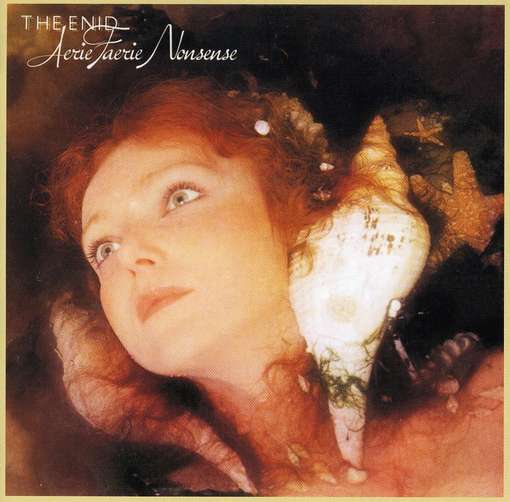 This second effort revealed a slightly less serious side of The Enid. All romance and fantasy, the album bears no weight of a ponderous message or concept. Nevertheless, it is heavily steeped in Arthurian and Celtic legend. The tone poem, "Fand," which occupies side two, and "Childe Roland to the Dark Tower Came" breathe new life into the myth of Parsifal that Wagner made so famous. The music's direction actually proceeds from an orchestral foundation; the result is more authentic than is the case whereby a simple veneer of classicism is melded onto rock forms... "Not the Moody Blues"... is probably how the Duke of Prunes would describe it! These first two recordings symbolize the birth and youth of The Enid, and as such are marked by a wide-eyed, gallant spirit.
This second effort revealed a slightly less serious side of The Enid. All romance and fantasy, the album bears no weight of a ponderous message or concept. Nevertheless, it is heavily steeped in Arthurian and Celtic legend. The tone poem, "Fand," which occupies side two, and "Childe Roland to the Dark Tower Came" breathe new life into the myth of Parsifal that Wagner made so famous. The music's direction actually proceeds from an orchestral foundation; the result is more authentic than is the case whereby a simple veneer of classicism is melded onto rock forms... "Not the Moody Blues"... is probably how the Duke of Prunes would describe it! These first two recordings symbolize the birth and youth of The Enid, and as such are marked by a wide-eyed, gallant spirit.
Trouble with Buk soon spelled the need for a label change, however, and Terry King stepped in to secure the group a very lucrative deal with Pye Records. Elation soon turned to grief as the executives responsible for their signing left Pye within weeks of the band's arrival. In the hands of a company that was unfit to guide them, The Enid soldiered on into their second period of work. This very troubled time ironically culminated in the release of two masterpieces: Touch Me (recorded in autumn of 1978); and Six Pieces (from exactly one year later).
 Given little time for recording these albums, it wasn't possible for them to develop a theme. But what they lack in conceptual direction they more than make up for in sheer musical content, the most elaborately complex music of their career. "Albion Fair," and "Humouresque" (both from Touch Me), so beautifully depict the metaphor of a group leaving the nest of their childhood years. "Gallavant" takes a lugubrious theme from Bruckner and makes it soar! Making his debut with the band as second keyboardist was Willie Gilmour. An oboist, Tony Freer, was added as well, making a seven-piece lineup. But he left during the making of the follow-up.
Given little time for recording these albums, it wasn't possible for them to develop a theme. But what they lack in conceptual direction they more than make up for in sheer musical content, the most elaborately complex music of their career. "Albion Fair," and "Humouresque" (both from Touch Me), so beautifully depict the metaphor of a group leaving the nest of their childhood years. "Gallavant" takes a lugubrious theme from Bruckner and makes it soar! Making his debut with the band as second keyboardist was Willie Gilmour. An oboist, Tony Freer, was added as well, making a seven-piece lineup. But he left during the making of the follow-up.
Six Pieces, from late 1979, presents musical cameos; one for each member. It is one of the few examples of small-scale works in their whole career. "The Ringmaster" and "Punch and Judy Man" are frantic, schizoid workouts, where new percussionist Robbie Dobson (a former member for a brief period in 1975) leads the musical charge. "Sanctus" (Robert's piece) is an august, stately interpretation, while the inward-looking "Once She Was (Scarborough Fayre)" and "Hall of Mirrors" are so chilling, something that could only have been composed by an English group. A little bit of every side of The Enid's personality is captured here, which accounts for its strong appeal. Robbie's tenure as "Ringmaster" of the band, however, was again short lived. This time he was replaced at the drum chair by Chris North.
The Enid had almost completely shed any connections to rock music by now. Sounding even more so like an orchestra, they continued to utilize more and more classical forms: the funeral march (see "Cortege"); the elegy; the tone poem; the theme-and-variations. The intricacies and subtleties of performance and arrangement they achieved here are unparalleled in the genre.
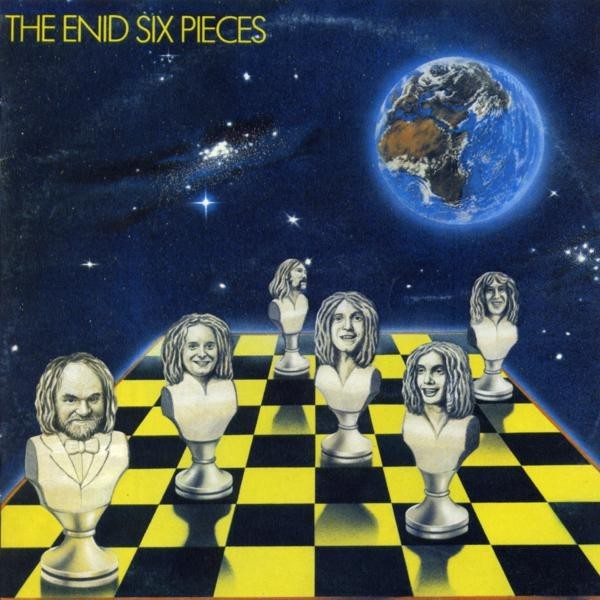 The protean nature of Six Pieces unfortunately manifested a darker side, that would have dire consequences. The unceremonious non-event of its release, not to mention the amateur cover design, pretty well betrayed Pye Records' cynical attitude towards The Enid. In 1980 they parted company with Pye after an acrimonious dispute. The virulent atmosphere was echoed internally as well, as Robert and Francis came to loggerheads over command of the musical direction. This tore apart the founding triumvirate. At year's end, upon completion of a lengthy tour, Francis Lickerish and Willie Gilmour took their leave. Later, In 1981, Martin Russell left as well, though amicably. And Chris North followed in 1982. It seemed the doldrums were to grow ever nigh.
The protean nature of Six Pieces unfortunately manifested a darker side, that would have dire consequences. The unceremonious non-event of its release, not to mention the amateur cover design, pretty well betrayed Pye Records' cynical attitude towards The Enid. In 1980 they parted company with Pye after an acrimonious dispute. The virulent atmosphere was echoed internally as well, as Robert and Francis came to loggerheads over command of the musical direction. This tore apart the founding triumvirate. At year's end, upon completion of a lengthy tour, Francis Lickerish and Willie Gilmour took their leave. Later, In 1981, Martin Russell left as well, though amicably. And Chris North followed in 1982. It seemed the doldrums were to grow ever nigh.
This was the absolute nadir for Godfrey and Stewart, emotionally speaking, and accounts for their inactivity during the intervening two years at the beginning of the 80s. The new decade went about as an omnivorous fiend, ruthlessly ripping apart practically any British progressive band who had an ounce of ambitions. Late in 1982, after Robert's recovery from illness and yet more legal wrangling, the two burned their bridges and decided to go it alone, independently.
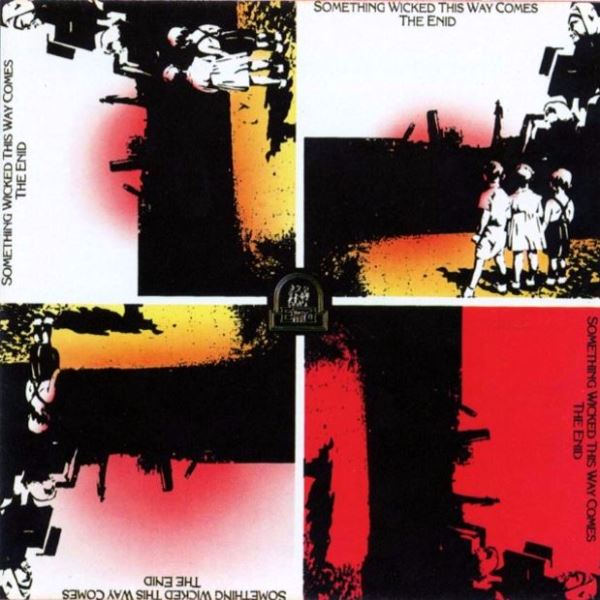 Something Wicked This Way Comes, released in 1983, crystallizes all the virtues of The Enid into a potent, hard-hitting musical statement, the most immediate and accessible of their career. Reduced to just the two (of three) original core members, joined by Chris North (as a session drummer), they had grown into a powerful force. Thematically Something Wicked treats the threat of nuclear war in very ambiguous terms; a god's-eye view expressed in a way that neither pontificates nor takes up sides, but very poetically tries to unmask the reality behind the situation and its potential impact on life as we know it. Bitterness and melancholy permeate. It is the only song-oriented album they ever created, and for the first time, vocals appear. Furthermore, their voices are unique and instantly identifiable: Stewart the haunted child, Godfrey the doomsayer. And the chorus sound they hit upon became their trademark in much subsequent work.
Something Wicked This Way Comes, released in 1983, crystallizes all the virtues of The Enid into a potent, hard-hitting musical statement, the most immediate and accessible of their career. Reduced to just the two (of three) original core members, joined by Chris North (as a session drummer), they had grown into a powerful force. Thematically Something Wicked treats the threat of nuclear war in very ambiguous terms; a god's-eye view expressed in a way that neither pontificates nor takes up sides, but very poetically tries to unmask the reality behind the situation and its potential impact on life as we know it. Bitterness and melancholy permeate. It is the only song-oriented album they ever created, and for the first time, vocals appear. Furthermore, their voices are unique and instantly identifiable: Stewart the haunted child, Godfrey the doomsayer. And the chorus sound they hit upon became their trademark in much subsequent work.
Thus marks the beginning of the band's most active period. With no airplay (apart from a very well-timed plug from "Radio 1" DJ Tommy Vance) or record company to support them, Robert and Steve turned to their fans. They formed The Stand, their alternative to a record company for the years to come. Each year a special recording was produced for the members: the first was a live recording from their 1983 tour; the next year saw a collection of singles from the Pye era, plus selections from the long lost Fall of Hyperion. 1986 featured a cassette of music composed by friend, painter/composer William Arkle. Robert arranged and performed the work on synthesizers.
The other project that occupied them was the re-release of their entire backlog of 70s work. A bitter battle ensued between The Enid and EMI over the rights to the first two, for which the group hadn't received a penny in royalties. In the Region had to be half redone, so they took the opportunity to improve on the original, changing the titles and topping it off with a beautiful new cover designed by William Arkle. A live recording, in two separate volumes, recorded in 1979 also appeared.
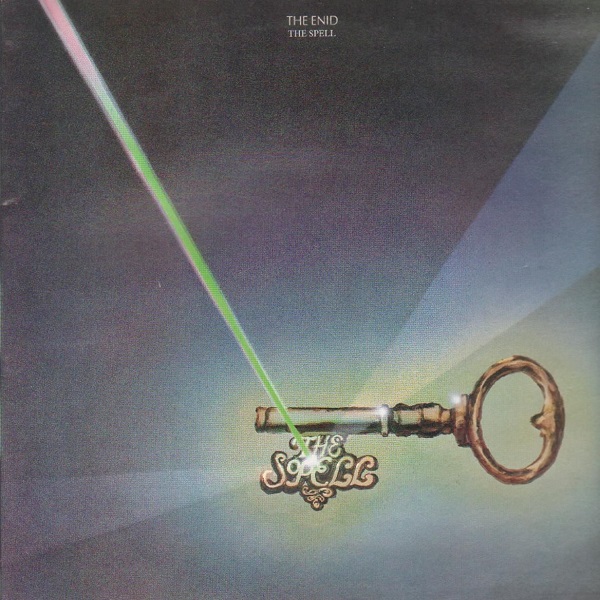 Returning to their new work, they very quickly followed up Something Wicked with The Spell in 1984. This double-LP project forms a catalyst with its predecessor. It puts into perspective the harsh realities of Something Wicked, and by using the seasons as an allegory, reflects on the observation that everything in life is cyclical. The Spell acts as natural development from what came before it, and this is the light in which it must be seen in order to be truly appreciated. Never before had The Enid sounded so self-assured. Godfrey's compositions had matured greatly by this time. A grandiose, epic-scope work, but in a way much different from Touch Me and Six Pieces, it reflects his love of opera, which is what gives his music its drama and pathos. Wagner-inspired leitmotif is used as a unifying force. And some of his most beautiful melodies can be found here. The Spell embraces with serenity the vicissitudes and mysteries of existence, thus representing a big step forward in their career.
Returning to their new work, they very quickly followed up Something Wicked with The Spell in 1984. This double-LP project forms a catalyst with its predecessor. It puts into perspective the harsh realities of Something Wicked, and by using the seasons as an allegory, reflects on the observation that everything in life is cyclical. The Spell acts as natural development from what came before it, and this is the light in which it must be seen in order to be truly appreciated. Never before had The Enid sounded so self-assured. Godfrey's compositions had matured greatly by this time. A grandiose, epic-scope work, but in a way much different from Touch Me and Six Pieces, it reflects his love of opera, which is what gives his music its drama and pathos. Wagner-inspired leitmotif is used as a unifying force. And some of his most beautiful melodies can be found here. The Spell embraces with serenity the vicissitudes and mysteries of existence, thus representing a big step forward in their career.
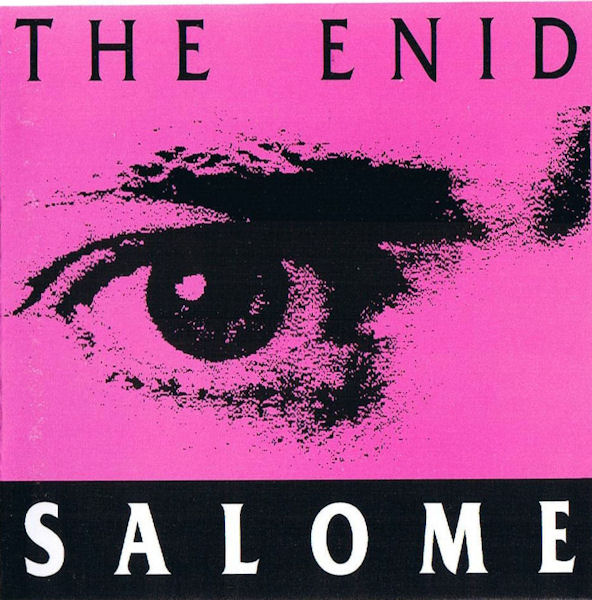 1986's Salome is where The Enid probably broke away from much of their earlier following. It begins the last phase of the partnership of Godfrey and Stewart. Taken together with The Seed and the Sower it symbolizes the full maturity of The Enid; the authority attained by one who has achieved a singular and unique musical voice. Side two's "The Change" is monumental in how modern synthesizer technology is used to portray the savage, relentless surge leading up to John's decapitation. The tension is mitigated however, by the mystical "Flames of Power" that follows, and the more recognizable "Sheets of Blue" of side one. The vocalizing is of a disturbing, spoken intonation, as befitting this look into the dark, psychological forces at play in the drama. Salome was scored for a ballet, and subsequently performed as such in concert.
1986's Salome is where The Enid probably broke away from much of their earlier following. It begins the last phase of the partnership of Godfrey and Stewart. Taken together with The Seed and the Sower it symbolizes the full maturity of The Enid; the authority attained by one who has achieved a singular and unique musical voice. Side two's "The Change" is monumental in how modern synthesizer technology is used to portray the savage, relentless surge leading up to John's decapitation. The tension is mitigated however, by the mystical "Flames of Power" that follows, and the more recognizable "Sheets of Blue" of side one. The vocalizing is of a disturbing, spoken intonation, as befitting this look into the dark, psychological forces at play in the drama. Salome was scored for a ballet, and subsequently performed as such in concert.
During The Enid's final days they produced two cassettes that, while perhaps subconsciously, seem to point to the imminent dissolution of the Godfrey/Stewart partnership. "Reverberations" was a commissioned work which Robert completed for healer Matthew Manning, and originally slated for inclusion on The Seed and the Sower. The piece consists of basically one haunting melody, floating in a liquid, effervescence of synthesized sound. Here, Godfrey dispenses with allegory and euphemism. "Reverberations" is more like a living, breathing beast. A palpable sense pervades it in a manner like nothing he had ever done previous.
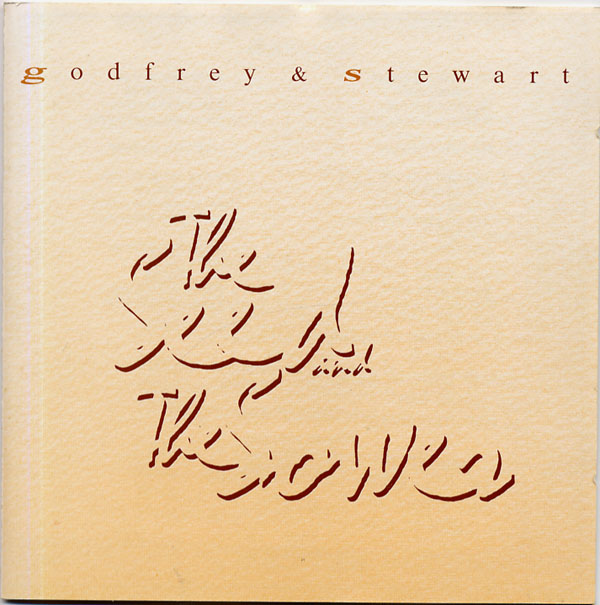 Still more unorthodox was "Joined by the Heart." Meant as a musical portrait, and to generate funds for their final project, The Seed and the Sower, it allocates one side to each member. Robert's reminds me almost of sculpture in that you never get the full picture of it all at one time. It is somehow serene and agitated simultaneously; clearly indicative of a spirit ill at ease... his biggest departure, even more so than "Reverberations." Steve's pulsates with a steady musical heartbeat that reestablishes us on terra firma. The subterranean mood it creates is a perfect palliative to the restlessness of Robert's piece. It is not difficult to see this as the progenitor of a whole new era. Ironically, it seems to represent, in hindsight, the roots of the split.
Still more unorthodox was "Joined by the Heart." Meant as a musical portrait, and to generate funds for their final project, The Seed and the Sower, it allocates one side to each member. Robert's reminds me almost of sculpture in that you never get the full picture of it all at one time. It is somehow serene and agitated simultaneously; clearly indicative of a spirit ill at ease... his biggest departure, even more so than "Reverberations." Steve's pulsates with a steady musical heartbeat that reestablishes us on terra firma. The subterranean mood it creates is a perfect palliative to the restlessness of Robert's piece. It is not difficult to see this as the progenitor of a whole new era. Ironically, it seems to represent, in hindsight, the roots of the split.
The Seed and the Sower was produced and recorded in full knowledge that it would be the last. Steve Stewart had for many years hankered after a more commercial direction, and it was probably to appease his needs that the split came about. More than anything, I feel this album expresses the melancholy of accepting with grace and dignity, the end of the musical "quest" that began fifteen years prior at Finchden Manor. The concept, based on Laurens van der Post's book of the same name, deals with two fundamental issues: firstly, the conflict between man's tribal and individual identity; secondly, the way in which tragedy and misfortune are necessary in galvanizing the human spirit. Throughout most of the album a dreamy, languid mood predominates. Nevertheless it is perhaps the most mature musical statement to emanate from the duo. "Chaldean Crossing" builds and builds, to ever more dramatic heights, an incontrovertible classic. The album bows out with indomitable spirit on the climax, "Earthborn," which reads like a fond farewell to Steve Stewart. Formal adieu however would be bid at their final concert together in November, 1988. Final Noise honors the event with a set of music spanning their entire career.
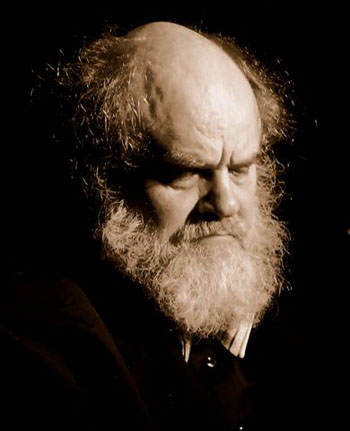 Going their separate ways, Steve continued work as an in-demand engineer, while Robert had other ideas up his sleeve. He teamed up with some younger musicians who formed Come September, and served as their mentor, helping to compose music, and advise them. Though without a doubt less ambitious than The Enid of old, it nevertheless bore the identifiable mark of Godfrey's presence: a very elaborate and lush soundscape, with beautiful melodies, but in a simpler song setting. However, this inevitably left open quite a gaping void that could only be filled by "...the proper thing — pure, undiluted Enid."
Going their separate ways, Steve continued work as an in-demand engineer, while Robert had other ideas up his sleeve. He teamed up with some younger musicians who formed Come September, and served as their mentor, helping to compose music, and advise them. Though without a doubt less ambitious than The Enid of old, it nevertheless bore the identifiable mark of Godfrey's presence: a very elaborate and lush soundscape, with beautiful melodies, but in a simpler song setting. However, this inevitably left open quite a gaping void that could only be filled by "...the proper thing — pure, undiluted Enid."
In late 1992 rumors began to spread about a new configuration of The Enid. Indeed Robert John Godfrey had embarked on a series of small-scale concerts with new musicians, under the pseudonym 'Aerie Faerie Nonsense', to test the waters. The group seemed to be keeping a much lower profile than in years past, but finally in 1994 a full-blown album did emerge. Godfrey had promised a no-holds-barred classic Enid... and that's just what he delivered.
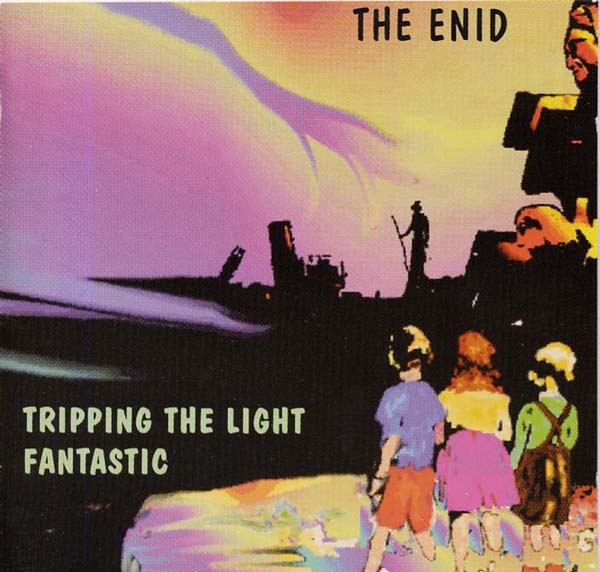 Tripping the Light Fantastic is a concept that is informed by the welcome conviction of man-as-a-conscious-being, at the center of all scientific endeavor. This came about as a result of his study of quantum mechanics. Musically it is somewhat of a bridge between the 70s Enid and the more rhythmic drive of Godfrey's newer direction (which began with Salome); even taking in elements of the Come September sound, but places it in a context that is richer and full of the ambiguities and depth we've come to expect from Godfrey's music. This instrumental opus is a watershed album, in much the same way that Something Wicked, and In the Region were. (See the full review in issue seven). Along with Sundialer (which comprises mainly remixes), Tripping the Light points to a new departure for The Enid. The maestro has integrated synthesizers into the music much more thoroughly, akin to the electronic sphere of Tangerine Dream, et al. This adds a whole new dimension of ethereal, warbly textures and colors, and eschews much of the classicism from days of yore. It takes in a variety of references some of which harken back to the '86-'88 days. The music is upbeat, urgent and vital.
Tripping the Light Fantastic is a concept that is informed by the welcome conviction of man-as-a-conscious-being, at the center of all scientific endeavor. This came about as a result of his study of quantum mechanics. Musically it is somewhat of a bridge between the 70s Enid and the more rhythmic drive of Godfrey's newer direction (which began with Salome); even taking in elements of the Come September sound, but places it in a context that is richer and full of the ambiguities and depth we've come to expect from Godfrey's music. This instrumental opus is a watershed album, in much the same way that Something Wicked, and In the Region were. (See the full review in issue seven). Along with Sundialer (which comprises mainly remixes), Tripping the Light points to a new departure for The Enid. The maestro has integrated synthesizers into the music much more thoroughly, akin to the electronic sphere of Tangerine Dream, et al. This adds a whole new dimension of ethereal, warbly textures and colors, and eschews much of the classicism from days of yore. It takes in a variety of references some of which harken back to the '86-'88 days. The music is upbeat, urgent and vital.
The departure of guitarist Nick May engendered an agonizing search for members to properly perform full-scale works like "Albion Fair." Finally a working lineup was solidified, consisting of guitarists Grant Jaimeson and "Goodge", Alex Tsentides (bass), Steve Hughes (drums), and Robert John Godfrey . I cannot yet confirm the presence of a second keyboardist. An ambitious project dedicated to The Enid's music is set for October 11th, 1997. For this event the group will perform at the Royal Albert Hall with a 100-piece orchestra. It is certain to be the highlight in the career of Robert John Godfrey, for whom the concert will be a 50th-birthday commemoration.
Filed under: Profiles, Issue 10
Related artist(s): The Enid, Robert John Godfrey
What's new
These are the most recent changes made to artists, releases, and articles.
- Review: Pietro Zollo - The Future Is Now
Published 2025-12-30 - Release: Dhope - Musical Exhibitions
Updated 2025-12-29 23:00:53 - Release: Tin Pan Alley - Tin Pan Alley
Updated 2025-12-29 22:51:10 - Release: Jeff Pearce - Infinite Ambient: Winter Landscapes
Updated 2025-12-29 22:33:12 - Release: Trio of Bloom - Trio of Bloom
Updated 2025-12-29 17:19:40 - Artist: Trio of Bloom
Updated 2025-12-29 17:16:50 - Artist: Craig Taborn
Updated 2025-12-29 17:02:15 - Release: Family - Old Songs, New Songs
Updated 2025-12-29 00:03:41 - Review: The Kirkbys - It's a Crime: The Complete Recordings
Published 2025-12-29 - Release: Various Artists - Psychedelic Underground 20
Updated 2025-12-28 23:33:26 - Artist: Dhope
Updated 2025-12-28 23:27:49 - Artist: Tin Pan Alley
Updated 2025-12-28 23:21:39 - Release: Various Artists - Psychedelic Underground 19
Updated 2025-12-28 23:04:15 - Review: Earthbound - Earthbound
Published 2025-12-28 - Review: Olgoj - A Place to Rest
Published 2025-12-27 - Release: John Weider - John Weider
Updated 2025-12-26 19:13:54 - Artist: John Weider
Updated 2025-12-26 19:09:52 - Release: Moonrider - Moonrider
Updated 2025-12-26 18:51:45 - Artist: Moonrider
Updated 2025-12-26 18:49:51 - Release: Octopus Syng - Insanity Is the Song We Sing
Updated 2025-12-26 12:53:35
